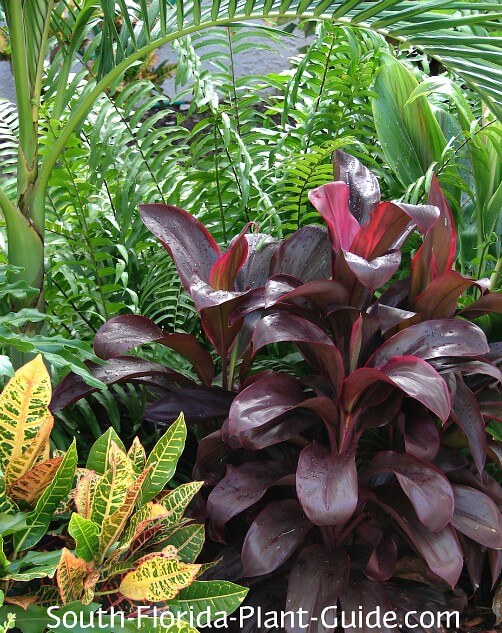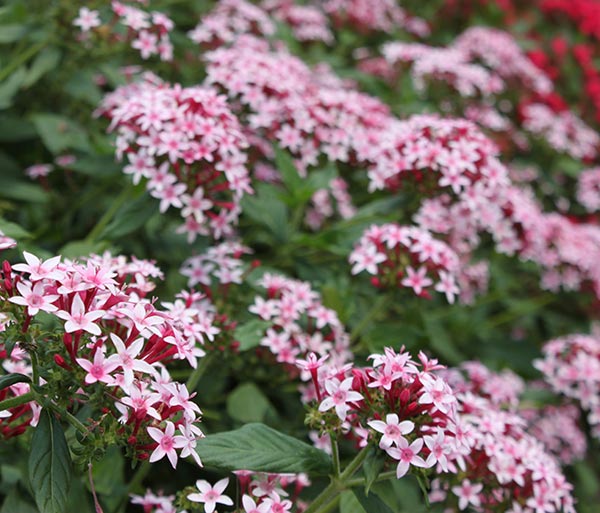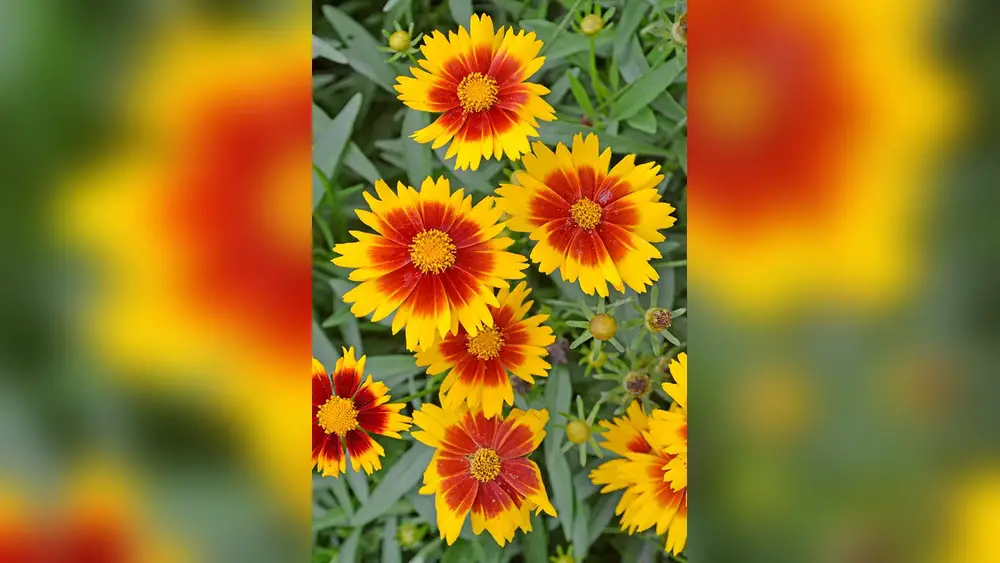If you want a vibrant, colorful garden that thrives in South Florida’s unique climate, knowing the best time to plant flowers is key. Planting at the right moment can save you frustration, time, and money while giving your flowers the strongest start possible.
Whether you’re a beginner or a seasoned gardener, understanding when to plant will help your garden flourish year-round. Ready to discover the ideal months to get your hands dirty and watch your garden bloom? Let’s dive into the best planting times for South Florida flowers so you can create the beautiful outdoor space you’ve been dreaming of.
Climate Impact On Planting
Understanding South Florida’s climate is key to successful flower planting. The region’s weather shapes when and how flowers grow best. Gardeners can use this knowledge to plan their planting schedules wisely. The climate influences soil moisture, temperature, and sunlight availability. These factors affect seed germination and plant health. Let’s explore how climate impacts planting through year-round potential, temperature shifts, and rainfall patterns.
Year-round Planting Potential
South Florida’s warm climate allows planting throughout the year. Mild winters mean frost is rare, so many flowers survive cold snaps. Gardeners enjoy multiple planting seasons for different flower types. Tropical and subtropical flowers thrive in this environment. The long growing season supports continuous blooms and new plantings. This advantage helps maintain colorful gardens with less downtime.
Seasonal Temperature Variations
Temperatures in South Florida vary but stay mostly warm. Summers are hot and humid, which suits heat-loving flowers. Some plants may struggle with intense heat and require shade or extra water. Winters are mild, usually above 50°F, which favors cool-season flowers. Spring and fall offer moderate temperatures, ideal for planting most flower varieties. Understanding these shifts helps choose the right planting time.
Rainfall Patterns
South Florida experiences a wet and dry season. The wet season runs from May to October with heavy rains and storms. Plants benefit from natural watering but may need good drainage to avoid root rot. The dry season lasts from November to April, requiring supplemental irrigation. Flowering plants often bloom best after rain, so timing planting before rainy months is smart. Monitoring rainfall aids in planning watering and fertilizing schedules.

Credit: www.south-florida-plant-guide.com
Best Months For Planting
Knowing the best months for planting flowers in South Florida helps your garden thrive. The region’s warm climate allows planting most of the year. Still, certain months offer better conditions for growth and bloom. Choosing the right time reduces stress on plants and saves water. Below, explore the main planting seasons and their unique benefits.
Spring Planting Benefits
Spring is a popular time for planting flowers in South Florida. The weather warms gradually, encouraging strong root growth. Many flowers bloom beautifully with spring planting. Soil moisture is usually good, helping seeds sprout easily. Planting in spring gives flowers time to establish before summer heat arrives. This season suits annuals and perennials alike.
Fall Planting Advantages
Fall offers cooler temperatures and less intense sunlight. Plants face less heat stress and grow steadily. Many flowers planted in fall bloom longer through winter and early spring. Fall rains help plants settle without frequent watering. It’s a great time for bulbs and cool-season flowers. Fall planting also prepares your garden for a colorful winter.
Summer Heat Considerations
Summer in South Florida is hot and humid. Some tropical flowers handle the heat well if watered properly. Planting in summer requires careful attention to moisture and shade. Avoid planting delicate flowers during peak heat hours. Choose heat-tolerant varieties like hibiscus and pentas. Summer planting can work but needs extra care to keep plants healthy.
Flower Choices For South Florida
Choosing the right flowers for South Florida is key to a vibrant garden. The region’s warm climate and humidity shape what will thrive outdoors. Selecting plants that handle heat and occasional dry spells leads to better growth and longer blooming. Gardens flourish best with flowers adapted to local weather and soil conditions.
Heat-tolerant Tropical Flowers
Tropical flowers love South Florida’s hot summers and mild winters. Hibiscus, bougainvillea, and mandevilla add bright colors and exotic shapes. These flowers resist heat well and need regular watering. They attract butterflies and hummingbirds, enriching your garden’s ecosystem. Planting tropicals ensures blooms all year in sunny spots.
Low-maintenance Varieties
Some flowers need little care but still brighten the garden. Pentas, lantana, and zinnias grow easily with minimal watering. They handle pests and heat without much help. These plants suit busy gardeners or beginners. Their steady blooms provide color without extra effort.
Seasonal Bloomers
Certain flowers bloom best during cooler months in South Florida. Petunias, snapdragons, and pansies thrive in fall and winter. They bring fresh color when tropicals slow down. Plant these seasonal flowers in late fall for lasting beauty. Changing blooms keep the garden lively through the year.

Credit: costafarms.com
Planting Tips For Success
Planting flowers in South Florida needs care to help them grow well. Good planting habits make flowers healthy and bright. Follow simple steps for the best results.
Focus on soil, water, and sunlight. These three help flowers take root and bloom beautifully. Use these tips to start your garden right.
Soil Preparation Techniques
Start with clean, loose soil. Remove weeds and rocks before planting. Mix in organic compost to add nutrients. This helps soil hold moisture and air. Test soil pH; most flowers like a slightly acidic to neutral pH (6.0-7.0). Adjust with lime or sulfur if needed. Good soil makes roots strong and plants healthy.
Watering Guidelines
Water flowers right after planting. Keep soil moist but not soggy. Water early in the morning to reduce evaporation. Check soil daily, especially in hot weather. Deep watering encourages strong roots. Avoid wetting leaves to prevent disease. Adjust water based on rainfall and temperature.
Sunlight Requirements
Most South Florida flowers need full sun, about 6 to 8 hours daily. Some flowers grow well in part shade. Observe your garden to see where sun falls. Place sun-loving plants in bright spots. Use shade-tolerant flowers under trees or near buildings. Proper light helps flowers bloom longer and look their best.
Flower Care Through The Seasons
Flower care in South Florida changes with each season. Warm weather and high humidity affect plant health. Knowing how to care for flowers through the year helps keep them vibrant. Each season brings unique challenges and needs. Good care ensures strong blooms and healthy growth.
Managing Summer Heat Stress
South Florida summers are hot and humid. Flowers need extra water to avoid heat stress. Water plants early in the morning or late evening. Mulch around flowers to keep soil cool. Shade delicate plants during the hottest hours. Remove wilted leaves to improve airflow. Heat-tolerant flowers like pentas do well in summer.
Protecting Flowers In Cooler Months
Winter in South Florida is mild but can be cooler at night. Cover flowers with light cloths to protect from cold. Move potted plants indoors or to sheltered spots. Avoid heavy pruning during cold months. Monitor for pests that may hide in cooler weather. Choose flowers that thrive in cooler temperatures for winter color.
Fertilizing And Pruning
Feed flowers every 6 to 8 weeks with balanced fertilizer. Use slow-release fertilizers for steady nutrients. Prune dead or damaged stems regularly. Pruning helps flowers grow fuller and bloom longer. Avoid heavy pruning in extreme heat or cold. Clean tools before pruning to prevent disease spread. Proper fertilizing and pruning keep flowers strong year-round.

Credit: www.epicgardening.com
Common Challenges And Solutions
Growing flowers in South Florida has unique challenges. The warm climate and high humidity can cause problems. Pests, diseases, and humidity affect plant health. Knowing common challenges helps gardeners find solutions. This section covers key issues and how to handle them.
Pest Management
South Florida’s warm weather attracts many pests. Aphids, whiteflies, and spider mites are common. Check plants regularly for signs of pests. Use insecticidal soap or neem oil for control. Introduce beneficial insects like ladybugs. Keep the garden clean and remove damaged leaves. Healthy plants resist pests better.
Disease Prevention
Diseases spread quickly in warm, wet conditions. Fungal infections like powdery mildew and root rot are common. Plant flowers with good air circulation. Water early in the day to let leaves dry fast. Avoid overwatering to prevent root diseases. Use fungicides when needed. Clean tools and remove diseased plants promptly.
Dealing With Humidity Effects
High humidity can stress flowers and slow growth. It encourages mold and mildew on leaves. Choose plants that tolerate humidity well. Space plants to improve airflow and reduce moisture buildup. Mulch helps keep soil moist but not soggy. Regular pruning removes crowded growth. Monitor plants closely for any signs of stress.
Local Resources And Tools
Access to local resources and tools makes planting flowers in South Florida easier. These resources help gardeners plan the best planting times. They also provide tips suited to the unique climate and soil of the area. Using them can improve flower growth and garden success.
South Florida Planting Calendars
Planting calendars show the best months to plant specific flowers. They consider South Florida’s warm climate and seasonal changes. These calendars guide gardeners on timing for seeds and transplants. Following a planting calendar helps avoid heat stress and pests.
Extension Services
Extension services offer expert advice from local horticulturists. They provide free or low-cost workshops and gardening guides. You can get answers tailored to South Florida’s soil and weather. These services support both new and experienced gardeners.
Gardening Communities
Gardening communities connect local flower lovers to share knowledge. Members exchange tips on planting and flower care. They often organize events and plant swaps. Joining a community boosts confidence and learning for South Florida gardeners.
Frequently Asked Questions
What Is The Best Month To Plant In Florida?
The best months to plant in Florida are spring (March to May) and fall (September to November). These seasons offer ideal temperatures and rainfall for most plants. Heat-tolerant tropical plants can also thrive when planted in summer with proper watering.
What Is The Easiest Flower To Grow In Florida?
Pentas is the easiest flower to grow in Florida. It blooms nonstop with vibrant red, pink, lavender, or white clusters. Pentas require low maintenance and thrive in Florida’s climate.
Can You Plant Flowers In The Fall In Florida?
Yes, you can plant flowers in Florida during fall. Choose heat-tolerant varieties like petunias and pentas for best results. Fall offers ideal planting conditions with mild temperatures and adequate rainfall. Planting in fall helps flowers establish before the cooler winter months.
What To Plant In September In Southwest Florida?
Plant beans, southern peas, cucumbers, summer and winter squash, green onions, shallots, and turnips in Southwest Florida in September.
Conclusion
Planting flowers in South Florida thrives best in spring and fall. These seasons offer mild temperatures and good rainfall. Tropical flowers can handle summer heat with enough water. Choosing the right time helps plants grow strong and healthy. Planning your garden around these months saves effort and boosts success.
Enjoy vibrant blooms by planting at the best times. Start now and watch your garden flourish beautifully.

